February 2020
February 10, 2020
Explosion, Assault, Ostriches
Somehow I missed this video from 2012. Theorized at the time to be a viral marketing ploy. But I can't find any evidence it was ever resolved. Can WU-vies pin down a definitive answer?
Posted By: Paul - Mon Feb 10, 2020 -
Comments (3)
Category: Ambiguity, Uncertainty and Deliberate Obscurity, Animals, Violence, Advertising
February 9, 2020
Throwing Animals for Taking Death Leaps
Circus proprietor Edward Wulff patented a curious device in 1904. It was an apparatus that catapulted animals upwards. It had the rather alarming title, "Throwing Animals For Taking Death Leaps" (Patent No. 774,017). Wulff claimed it could throw "horses, elephants, monkeys, &c.." The patent illustration shows a horse, so these were evidently the primary animal being thrown.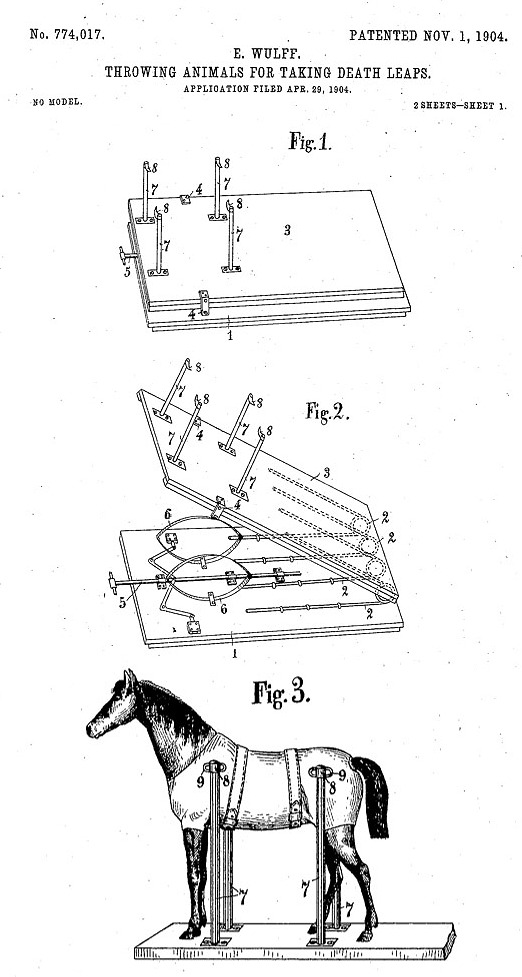
The device was relatively straight-forward. The animals were placed in a harness that held them on top of a spring-powered platform. The release of the springs then flung the animals upwards. Wulff emphasized that his apparatus was designed, via the harness, to place the projecting force on the full body of the animal, rather than just their legs. He seemed to feel that this was a safer, more humane method of throwing animals.
Wulff explained that this device was designed to be used as part of a circus stunt known as "a death leap or so-called 'salto-mortale.'" But he didn't offer any further explanation about the nature of the stunt or how far the animals were flung. And I couldn't locate any descriptions of this stunt in other sources. All the references to a 'death leap' stunt that I came across involved human trapeze artists, not animals. So I was about to conclude that the stunt would have to remain a mystery until I got the idea to check if Wulff had filed the patent in any other countries. Sure enough, there was a British version of the patent, and while its text was almost identical, it had a different title that explained the nature of the stunt:
So Wullf's apparatus was evidently designed to somersault animals. Not simply to catapult them upwards. This made me recall something I posted here on WU back in 2012. It was a brief item that appeared on the front page of the Washington Post's 'Miscellany Section' on April 21, 1907, titled 'Horse Can Turn Somersaults.' At the time, this random reference to a somersaulting horse totally baffled me. I even suspected it was a hoax. But now it makes sense. It must have been a circus stunt. Perhaps it even made use of Wulff's invention. I can't find any evidence that Wulff's circus was in Boston in April 1907, but it was in New York in December of that year.
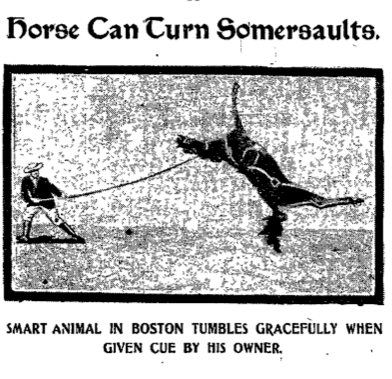
Wulff, it turns out, was the author of another odd patent, granted to him in 1887. The patent was titled, "Means and apparatus for propelling and guiding balloons." He intended to use birds such as "eagles, vultures, condors, &c" to guide balloons. The birds would be attached to the balloon by a harness, and an aeronaut would then force them to fly in the desired direction, thereby propelling the balloon.
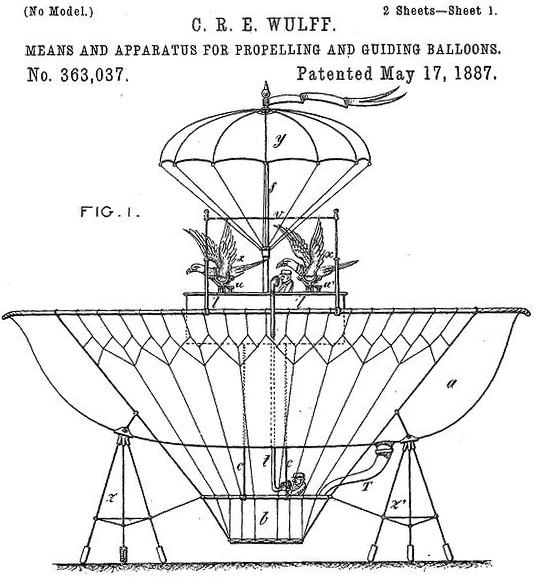
This patent has received quite a bit of attention, because there's a lot of interest in the history of early attempts at flying machines. Knowing that Wulff was a circus proprietor, I wonder if he intended his eagle-guided balloon to be used as part of a circus act, rather than as a practical flying machine.
Posted By: Alex - Sun Feb 09, 2020 -
Comments (6)
Category: Animals, Inventions, Patents, ShowBiz, 1900s
Lew Lehr’s Inventions
His Wikipedia page.
Posted By: Paul - Sun Feb 09, 2020 -
Comments (1)
Category: Inventions, Chindogu, Movies, Twentieth Century
February 8, 2020
Wasp Face
In 1933, Miss Winifred Mondeau found on her property a wasp’s nest that resembled a human face.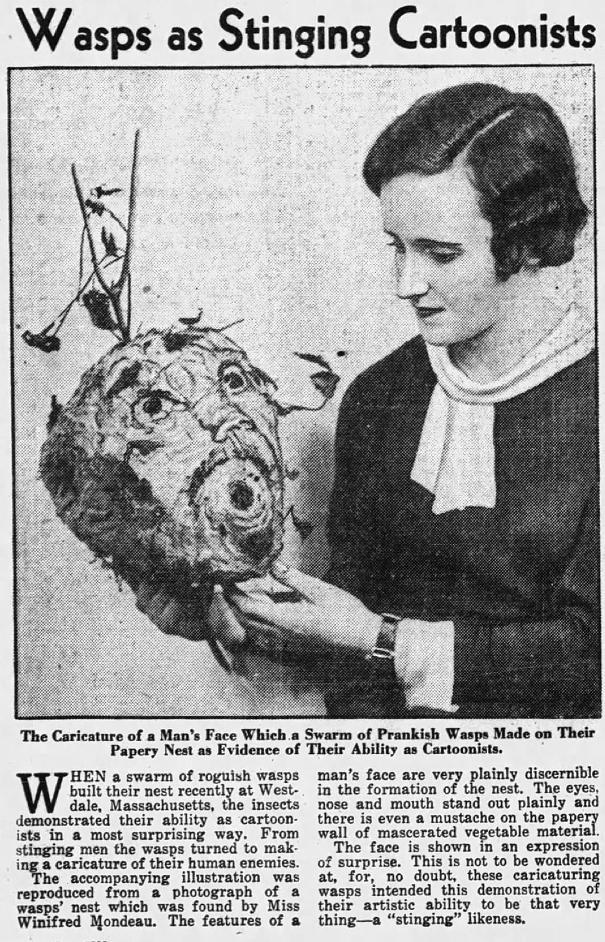
Newport News Daily Press - July 6, 1933
Some googling reveals that there’s a minor genre of wasp (and hornet) nests that resemble faces. The one below, for example, was found in the yard of Brenda Montgomery in 2017. Though it's not as good as the one from 1933.
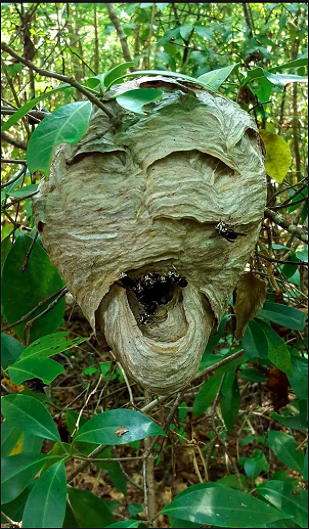
Posted By: Alex - Sat Feb 08, 2020 -
Comments (4)
Category: Insects and Spiders, 1930s, Pareidolia
Chattanooga Choo Choo, Brazilian Style
Posted By: Paul - Sat Feb 08, 2020 -
Comments (1)
Category: Costumes and Masks, Cult Figures and Artifacts, Music, Foreign Customs, Trains and Other Vehicles on Rails, 1940s, South America
February 7, 2020
Suntan Suzy Doll
Suntan Suzy was a doll that would develop a tan if you put her in the sunlight. Back in the shade, her tan would fade. She came on the market in 1962, but lasted only one season. As far as I can tell, she was the only doll that has ever had the ability to tan.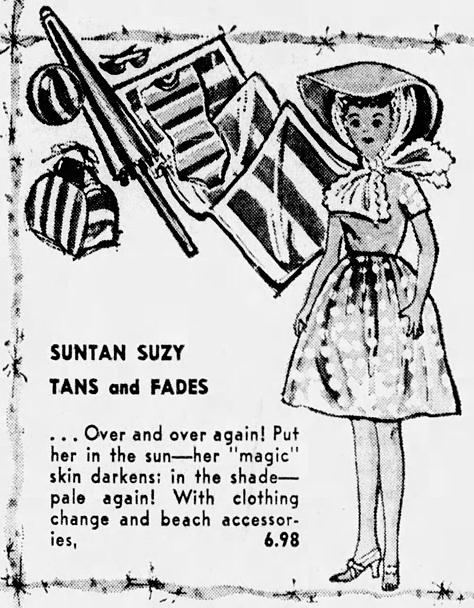
Arizona Republic - Nov 23, 1962
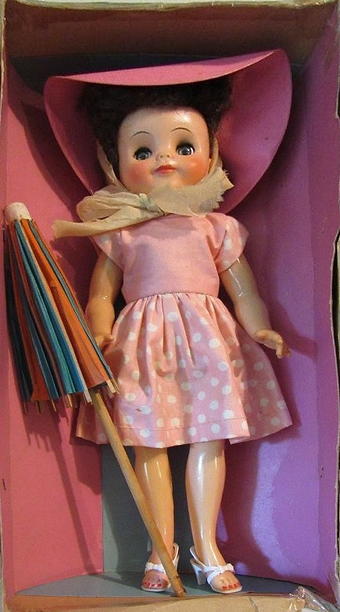
image source: worthpoint
The chemistry responsible for producing the tanning effect is described in Patent No. 2,921,407 (Jan 19, 1960) – “Simulating Sunburning Toy Dolls and Figurines”:

1550 grams of a high molecular weight polyvinyl chloride polymer, in powdered form, were dispersed in this solution by stirring for ten to fifteen minutes. The latter material was specifically Bakelite Company QYNV polymer. Thus a plastisol formulation containing the phototropic dye dissolved in the liquid dioctyl phthalate (plasticizer phase) was obtained. About 120 grams of this plastisol formulation were then poured into a two piece steel mold, this having its inner surface previously coated with a silicone oil release film. This was then placed in an oven at 140 degrees centigrade and held at this temperature for eight minutes to allow solution of the polyvinyl chloride polymer phase. The mold and contents were then removed from the oven, cooled to room temperature, and the now solid form of the doll figure removed.
The figure thus produced was transparent and red in color. Upon exposure to sunlight a progressive darkening to a brown, then blue-black color occurred during a period of about three to four minutes, simulating a “sunburning” effect. When the doll was shielded from the sun a return to the original color took place, being visually complete after a period of eight to ten minutes. This action was repeatable with no detectable change in functional characteristics being noted after several dozen cycles.
It seems like an interesting gimmick for a doll. Curious it never caught on.
Posted By: Alex - Fri Feb 07, 2020 -
Comments (3)
Category: Inventions, Patents, Toys, 1960s
The Ames Window
Posted By: Paul - Fri Feb 07, 2020 -
Comments (1)
Category: Ambiguity, Uncertainty and Deliberate Obscurity, Magic and Illusions and Sleight of Hand
February 6, 2020
Helmet Heat
-Wausau Daily Herald (Apr 20, 1957)
The heat might actually have helped to alleviate symptoms. So, in that sense, it wasn't a bad idea. But I doubt many people were willing to wear this for an extended period of time.
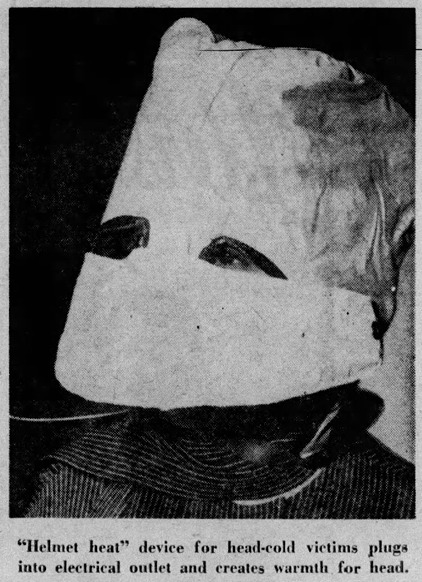
Dayton Daily News - June 16, 1957
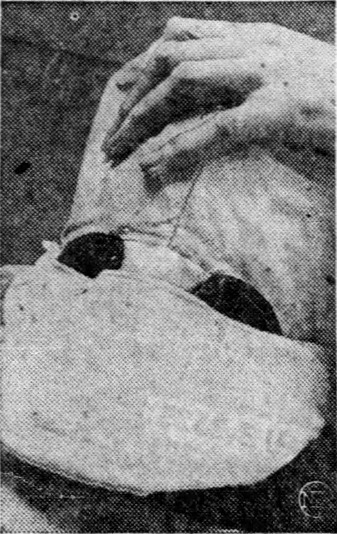
Wausau Daily Herald - Apr 20, 1957
Posted By: Alex - Thu Feb 06, 2020 -
Comments (2)
Category: Health, Cures for the common cold, 1950s
Follies of the Madmen #465
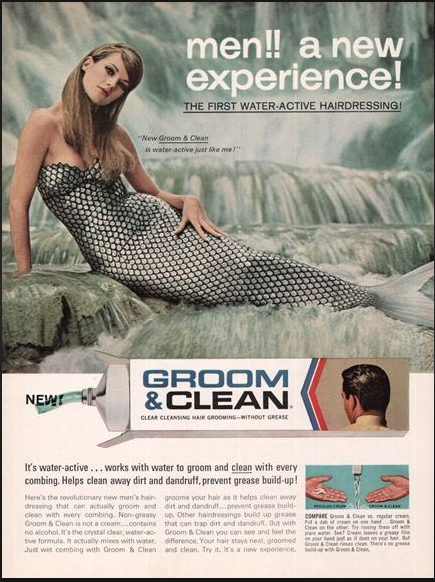
Source.
Posted By: Paul - Thu Feb 06, 2020 -
Comments (2)
Category: Business, Advertising, Cryptozoology, Twentieth Century, Hair and Hairstyling
February 5, 2020
Mum Loves Me Now
Bile beans as a cure for parental neglect.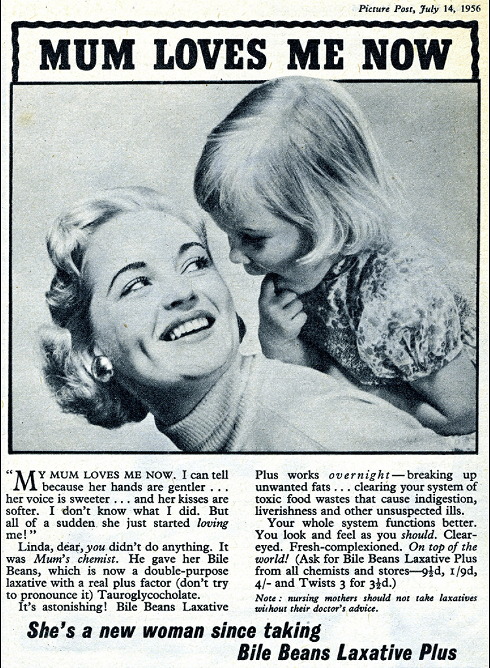
Posted By: Alex - Wed Feb 05, 2020 -
Comments (5)
Category: Advertising, Parents, 1950s
| Get WU Posts by Email | |
|---|---|

| Who We Are |
|---|
| Alex Boese Alex is the creator and curator of the Museum of Hoaxes. He's also the author of various weird, non-fiction books such as Elephants on Acid. Paul Di Filippo Paul has been paid to put weird ideas into fictional form for over thirty years, in his career as a noted science fiction writer. He has recently begun blogging on many curious topics with three fellow writers at The Inferior 4+1. Chuck Shepherd Chuck is the purveyor of News of the Weird, the syndicated column which for decades has set the gold-standard for reporting on oddities and the bizarre. Our banner was drawn by the legendary underground cartoonist Rick Altergott. Contact Us |

